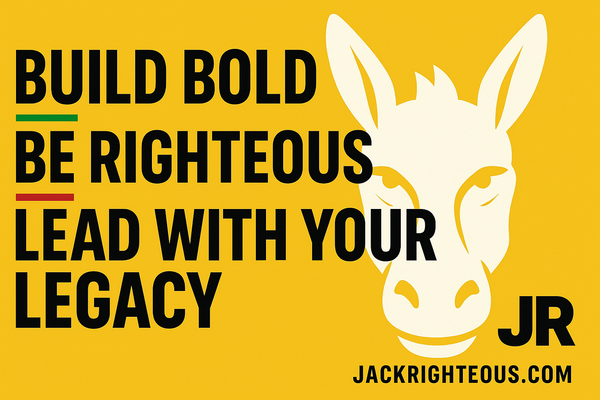AI Copyright Ruling: No Protection for AI Music & Art
Gary WhittakerAI Copyright Ruling: What This Means for Music, Art & Creators
🔥 Can You Copyright AI Music or Art? A U.S. Court Just Said "No"
Imagine spending months creating an album using AI tools like Suno AI or crafting stunning AI-generated artwork for your brand—only to find out you have no copyright over it.
That’s exactly what happened in a landmark U.S. appeals court ruling on March 18, 2025. The court rejected copyright protections for any artwork or content created entirely by artificial intelligence without human input.
This decision has massive implications for AI creators, indie musicians, digital artists, and content producers who rely on AI tools. If you’re making AI-assisted music, art, or written content, here’s what you need to know—and what you should do next.
📜 The Court’s Ruling: No Copyright for AI-Generated Works
The U.S. Court of Appeals for the District of Columbia Circuit ruled that AI-generated works with no human involvement are ineligible for copyright protection.
🔹 The case involved a visual artwork created by an AI system called DABUS, designed by Dr. Stephen Thaler.
🔹 Thaler applied for a copyright on behalf of the AI, arguing that the system had independently generated the art.
🔹 The U.S. Copyright Office rejected the application in 2022, stating that copyright law only applies to human creators.
🔹 Thaler sued, but both the district court and now the appeals court sided against him, reinforcing the "human authorship" requirement.
🔹 The ruling confirms that only human-created works can receive copyright protection—AI alone cannot own or create copyrighted material.
🚨 What does this mean for AI music, art, and content creators? Keep reading!
⚖️ Why AI Creations Aren’t Copyrightable
The court’s decision was based on a fundamental rule in U.S. copyright law:
💡 Copyright is only granted to human authors. The law defines "works of authorship" as being tied to a creator’s intent, originality, and creative decisions—which AI lacks.
🛑 No human, no copyright. If an AI creates a song, image, or book without human input, it immediately falls into the public domain—meaning anyone can use, copy, or profit from it without permission.
📖 Legal Precedents: The court referenced past cases, including:
✔️ The Monkey Selfie Case (2018), where a macaque took a selfie, but the court ruled animals can’t hold copyrights.
✔️ Other cases stating copyrights require human intention—AI alone doesn’t meet this standard.
🎵 What This Means for AI Music & Digital Artists
✅ What is Still Copyrightable?
You can still copyright AI-assisted music, art, and content—as long as you can prove significant human contribution to the final work.
✅ If you compose a song using AI but make edits to structure, lyrics, or melody, you can claim copyright.
✅ If you create an AI-generated album cover but edit colors, lighting, or details, you can copyright the modified version.
✅ If you write lyrics with ChatGPT but refine and structure them, you hold the copyright.
❌ What is NOT Copyrightable?
🚫 Fully AI-generated songs where you only provide a prompt but make no changes.
🚫 AI-generated beats or instrumentals that are used as-is without any creative modifications.
🚫 AI-generated cover art or logos if you don’t alter them with human input.
🔎 Key Takeaway: AI tools must be used as an assistant, not as the sole creator—otherwise, your work remains uncopyrighted and open for public use.
💡 What AI Creators Should Do Next
Now that fully AI-generated content is unprotected, here’s how to ensure your AI-assisted work remains legally yours:
🎼 For AI Musicians & Songwriters
✅ Modify AI-generated tracks—add melodies, live instruments, or unique arrangements.
✅ Save your creative process—document your prompts, adjustments, and mixing steps.
✅ Register your compositions manually—list yourself as the composer or arranger.
🎨 For AI Digital Artists & Designers
✅ Edit AI images—apply your own brushstrokes, lighting, or details.
✅ Use AI for reference, not the final piece—trace, remix, or enhance AI-generated elements.
✅ Watermark & license your work—especially for stock images and album covers.
✍️ For AI Writers & Content Creators
✅ Rewrite & structure AI-generated text—ensure it reflects your personal writing style.
✅ Credit yourself as the author—don’t submit raw ChatGPT-generated work as-is.
✅ Use AI for brainstorming, not for final drafts.
🚀 Final Rule: If you want copyright protection, AI should be a tool—not the sole creator.
🚀 Future of AI Copyrights: Will the Law Change?
With AI-created content booming, will the law adapt to allow AI-generated copyrights?
📢 Tech companies like OpenAI, Suno, and MidJourney are lobbying for copyright reforms, but Congress has not yet moved to change the law.
🔮 Possible Future Scenarios:
1️⃣ Congress updates copyright laws to allow AI-assisted works under new conditions.
2️⃣ AI companies shift towards “co-creation” models, ensuring human involvement.
3️⃣ Alternative protections arise—like trademarks, licensing models, or blockchain ownership.
For now, human creativity remains king—but AI’s role is evolving fast.
🎤 What Do YOU Think? Join the Conversation!
❓ Should AI-generated music, art, and content be copyrightable?
Drop a comment below! 👇
🔥 Stay ahead in the AI creator revolution! Bookmark jackrighteousmusic.com and sign up to The Righteous Beat for updates.
Final Thoughts
This ruling is a wake-up call for AI musicians, artists, and writers—but it’s also an opportunity to refine your approach.
Want to protect your AI creations? Make sure your human touch is undeniable. 🚀
